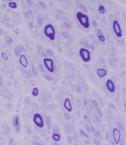Chromosomal diseases form a large group of genetic diseases. They make up a large part of all reproductive losses, congenital malformations, the causes of mental retardation and play an important role in the pathogenesis of malignant tumors.
Clinical Cytogenetics includes:
- study of amniotic fluid (amniocentesis)
- placental villi sampling
- the study of chromosomes blood
- chromosomal study abortive material
- chromosomal aberrations
- FISH for rapid detection research
FISH-analysis method allows objectively to identify individual chromosomes and some parts in the metaphase plate (chromosome condensation in a state of maximum and visualization) or the interphase nuclei (decondensed chromosomes, without precise morphological structure) based on the characteristics of their molecular genetic structure. The subject of investigation in this case are particularly the nucleotide composition of a particular chromosome or a single site. The classical method of FISH-analysis is based on the hybridization of a known nucleotide composition of DNA samples with a plot of test chromosome and the subsequent detection of hybridization results by label - fluorescent signal at the expected location. FISH-analysis method has become a necessary analytical procedure in the cytogenetic study and become popular today in the pre- and post-natal diagnosis, monitoring zygotes after artificial insemination, in procedure of preimplantation genetic diagnosis (PGD) in the selection of embryos with normal karyotype, etc.
The main advantages of FISH-analysis:
• High resolution (on drugs can to identify those chromosomal abnormalities that are not rendered in the ordinary light microscope);
• accuracy of diagnosis (sample size may vary from 90-100 thousand. up to several million base pairs, so that as a target may be not only single genes or chromosomal regions, but also the whole chromosome).
FISH-analysis reveals, for example, a few abnormal cells among thousands of cells with the normal genotype. All of these benefits are very important in a survey of couples with problems of reproduction, as chromosomal changes in such patients usually have no phenotypic clinical picture.
hide
 Clinical Cytogenetics - section genetics that studies the laws of heredity and variation at the level of cells and subcellular structures. The main subject of research in cytogenetics is the chromosome.
Clinical Cytogenetics - section genetics that studies the laws of heredity and variation at the level of cells and subcellular structures. The main subject of research in cytogenetics is the chromosome. 







